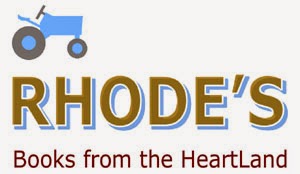When I was
very small, my mother read to me from Thornton W. Burgess’ Old Mother West Wind, which had a publication date of 1910 by
Grosset & Dunlap. I will not pretend that I understood all the details at
such an early age, but I delighted in George Kerr’s illustrations, which
depicted such animals as foxes, rabbits, and raccoons wearing gingham shirts
and knee britches with suspenders.
 |
|
One
of George Kerr’s Illustrations
In
Thornton W. Burgess’ Old Mother West Wind
(1910)
|
As I grew a
little older, my appreciation for Kerr’s art also grew. My mother drove me to
the public library in Oxford, Indiana, five miles from my hometown of Pine
Village. I was thrilled to find shelves full of other books by Burgess and
Kerr. My mother showed me how to check out a few of them. The fact that I could
take them home and read them before they had to be returned was so astonishing
that I thought public libraries must be the most amazing humanitarian
institutions ever invented!
Oxford’s
library was archived in a relatively small building underwritten by Andrew
Carnegie. At the time, it seemed large to such a small me. The fragrance of
bindings, paper, ink, glue, and wax permeated the rooms with their tables and
chairs wearing the glorious patina of years of use. I paid the nearly silent
librarian the highest respect as she stamped the papers affixed inside the
covers of the books I would read.
I returned
to the library again and again, until I had read all the Burgess books in the
collection. My young mind was filled with the exploits of the animals that
lived in Mother West Wind’s world. Otters, squirrels, skunks, turtles, frogs,
and owls joined the raccoons, rabbits, and foxes in action-packed story after
story. The magnificent illustrations led me from chapter to chapter. Is there a
word more sweeping than joy? If so, I
would use it now to describe my response to Burgess’ many books.
Somewhere
in the back of my mind, an idea had taken root: I wanted to become an artist. I
wanted to bring viewers the joy that Kerr’s illustrations brought me. The idea
quickly flowered, as I copied drawings in my books in the first grade. My
mother had encouraged me to draw since I was tiny. At the age of three, I had
created a pencil portrait of my grandmother. My father kept it in a cabinet.
When I found the drawing years later, I was surprised that it so closely
resembled my grandmother, even though the sketch was obviously that of a child.
Now double the age when I drew my father’s mother, I thought I should be constantly
drawing. The practice anticipated my sideline as an illustrator when I attended
Indiana University. During my career at Northern Kentucky University, I created
dozens of drawings for campus publications.
My love for
black-and-white sketches in particular and for entertaining illustrations in
general gained impetus from Old Mother
West Wind long ago.



